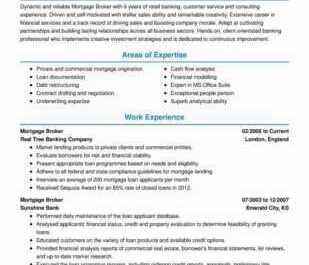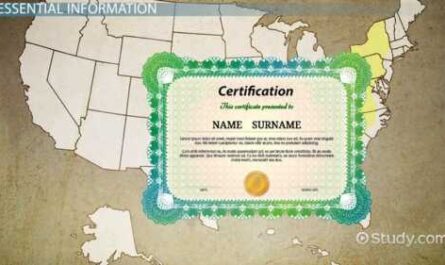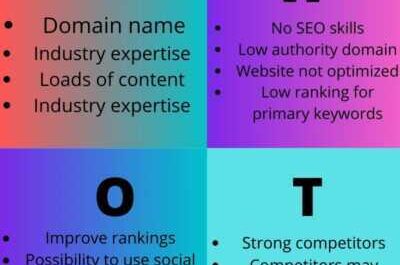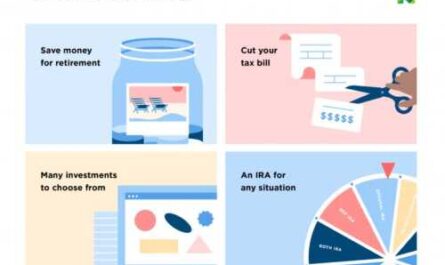Do you have a brilliant idea but don’t know how to use it to start a business? here is a complete guide on how to turn a simple idea into a multi-million dollar business …
Everyone gets an idea from time to time. We get ideas when we get stuck in traffic, at the dining table, in the office, reading a novel, and even in the closet. However, this does not necessarily mean that this idea can become a viable business.
An idea is like a spark that can turn into a fire ( those. flourishing business ). However, without proper care and dedication, that spark is sure to go away. According to the SBA (US Small Business Administration), approximately 600,000 businesses open annually and 550,000 close each year in the United States alone. It just goes to show that some ideas can be a gold mine and others a waste of time and resources. So how can you tell the difference between the two?
3 preparatory tasks to test your idea
and. Brainstorm your idea
Having an idea is not enough. To separate a good idea from a possible bug, you need to brainstorm and do the right research into what you are going to get into. Sometimes an idea may seem silly or unprofitable, but proper research can indicate otherwise.
Take the time to not only think about it, but write (or print) your ideas and research about it. Remember that any idea you come up with can provide a solution to the problem or it will be irrelevant.
After brainstorming an idea, you should move away from the idea. Let the idea sit for a few days or a week. When you come back to the idea, you can look at it from a new perspective. Read the idea again and rate your reaction: The idea is really good, or it just sounds good ?
It’s not necessarily a bad thing to discover that a potential business idea is not as good as you thought it was because the process saves you time, energy, and resources that would otherwise be wasted on a mediocre idea.
b. You are enthusiastic about your idea
Is your idea aimed at a company that you are passionate about? ? If not, you can reconsider. The process of starting and running a business can be lengthy and unreliable. Your ideas should be aligned with your goals, strength, timing, and the level of risk you want to take. Having a passion for your idea can help you through tough times. Plus, doing what you love can be incredibly enjoyable.
c. Was the idea accepted?
Before you can proceed, you need to find out if your idea has already been patented by someone else, that is, if the idea has already been adopted by another entrepreneur. If the idea is still free, then congratulations, but if the idea has been accepted you will have to look for a new idea.
After testing your idea to see if it has a chance, how can you turn it into a real business? Here are some tips to help you complete this task.
Turn a simple idea into a multimillion-dollar business
1. Create a business plan
The first step in turning an idea into a company is creating a business plan. Your business plan should include information about what your company is doing or what it has to offer, what goals you want to achieve, how you want to achieve those goals, who your potential customers are, and what strategies you have in place to attract them, among other things.
A business plan serves as a roadmap for how to start and ultimately improve your business. In addition, having a specific business plan reassures potential investors or partners that you mean business and therefore gives them a reason to support you.
2. Carry out a feasibility study / market research
What’s the use of creating a product that nobody wants? By doing market research on a product, you can better understand (or not) understand demand for your product, your potential competitors, the current market price, and the specifics of your product.
If you receive negative feedback, don’t take it personally. It may just have saved you a loss you may have suffered, and you can also customize your idea according to popular opinion to make it more appealing to the general public.
Market research can be conducted through one-on-one interviews, telephone interviews, email surveys, online surveys, online and offline questionnaires, and focus groups. You can use one or a combination of the methods above for effective and efficient market research. It is best if your idea already has a broad market, as demand can easily expand it in the future.
3. Test the launch of the product
Regardless of the product or service you want to sell, it is advisable to start testing. Create a test product that is inexpensive but represents your idea. Share your main product / prototype with friends and family, then measure their perception and reaction to the product and adjust accordingly. Also, experiment with the different advertising channels available to see which one will produce the best results at the lowest cost.
4. Get ready
Entrepreneurship is not easy and it is best to keep an eye on it. Unforeseen circumstances can arise and try to divert you from your main goal. Make sure you do your homework well and cover all the basics. Then evaluate your results and make sure you are physically and mentally prepared for the task ahead.
5. Choose a name and logo
When choosing a name for your product or service, it is best to choose a name that is memorable and adequately reflects your business. The name you choose must be unique. If it’s already taken, you’ll need to change it or buy the name from the original owner (i.e. if they want to sell). After the name is chosen, create a logo. You can create it yourself or give it to a professional. Choose a simple, professional logo that represents your company.
6. Run the idea on a small scale
After you’ve chosen a name, done all the research, and turned an existing idea into something salable, the next step is to start a business. Don’t sit down with what you have so long to perfect it, start small, improve, and improve on what you have. Learn how to make adjustments when you find your product / service is running out and try to keep your customers happy.
7. Follow the feedback on your idea on social networks
Social media platforms are one of the cheapest ways to sell your product worldwide. The platform you choose is determined by your target group. However, a Facebook page is mandatory for any business or service.
8. Expand and enlarge
Now that your idea has seen the light of day, it’s easy to relax and soak up the atmosphere of what you’ve created. However, it’s best to always want something more like Oliver Twist. Never stop there. Always look for ways to grow your business.
This can be done by expanding marketing, updating your product / service, hiring more qualified staff, training existing staff, entering into partnerships, etc. The business plan is drawn up from time to time and updated according to current trends. Be considerate of investors and provide them with information that will convince them that your business is worth investing in.
7 common mistakes to avoid when turning an idea into a business
I. With so many ideas
Don’t be an all-rounder. Instead of trying to bring all of your ideas to life, focus your efforts on your best idea. Decide on an idea that relates to what you are good at and what you enjoy doing. Let your passion make the choice, then start one idea at a time.
ii. Waiting for an original idea
Many people believe that you need an original idea to start a business. This is not necessarily true. An original idea is good, but not all original ideas are profitable or feasible. If you can improve or deliver a product / service better than your competitors, this unoriginal idea comes in handy.
iii. Waiting for the perfect idea / timing
An old Chinese proverb says: The best time to plant trees is ten years ago and the second best time is now The same goes for most business ideas. Your ideas don’t have to be perfect. You just have to be what people are willing to pay money for. Regardless of a country’s economic condition, there are always opportunities. You don’t have to wait for the right time because it will never come. Do some research and start, however small it is.
iv. You don’t want to share your idea with anyone
Often times, people save their business ideas because they fear that their ideas will be stolen by someone else. In fact, you should be doing the opposite. When you share your ideas with others, you will know if they have the same passion as you and the same problem that you are trying to solve. Gather their feedback on your idea and make the necessary adjustments.
v. Stick to your first idea: The first idea that comes to mind may not necessarily be the best. So don’t fall in love with her just yet. After researching an idea in advance, you can change, modify or delete it as needed.
vi. focus on the wrong things
Many entrepreneurs spend their time obsessing over their competitors. try to sabotage them to get the upper hand or just copy them properly. This is a very wrong approach. The business should be customer-centric and not competitive. Try to find out what your customers want. Meet their needs and exceed their expectations and your customers will return.
vi. Bad implementation: The best ideas can crash and burn if the entrepreneur does not execute them correctly. Inadequate research, non-working products, hiring the wrong people, and other reasons can lead to disaster for the company.
In conclusion, generating an idea can be a daunting task, but with the right preparation, persistence, and discipline you will be able to overcome the difficulties and build a viable business.









































